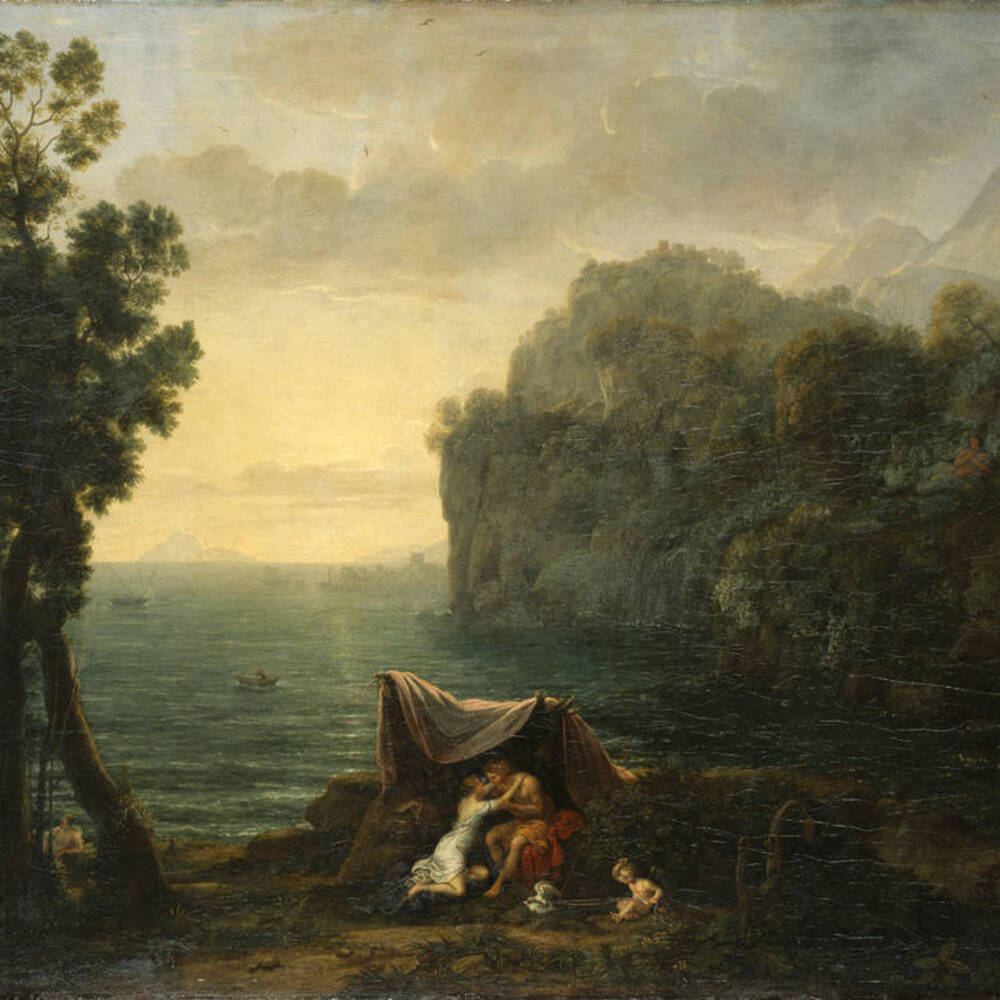The apparent idyll is deceptive. Under the tent, the nymph Galatea is meeting not the giant Polyphemus, who has fallen passionately in love with her, but rather the young Acis. Having been spurned and rejected, Polyphemus sits on the rocks to the right, observing them. According to ancient literary accounts, his furious jealousy will soon induce him to throw a boulder at Acis and kill him. Unaware of the impending tragedy, Galatea’s companions sit in a shell chariot on the left-hand side of the picture.
Further Media
Acis and Galatea are two figures from Greek mythology – but without knowing their story, Claude’s painting could easily be taken for an idyllic romantic scene. Galatea is a sea nymph, an immortal, and falls in love with the mortal Acis, a shepherd. They arrange a lovers’ tryst by the sea. Behind a provisional shelter, the two are safe from prying eyes. To the left, Galatea’s companions are waiting at a discreet distance in a shell boat.
But the harmony is deceptive. There is another figure in this story, an admirer of Galatea – and he can also be seen in Claude’s landscape. The admirer is on a rocky outcrop to the right, surrounded by his herd of sheep. Next to him, the sheep look tiny. After all, he is a giant – more precisely, a one-eyed giant, a cyclops. His name is Polyphemus, and his one eye is in the centre of his forehead. As yet, he does not seem to be aware of the lovers. But from the story of Acis and Galatea in the Metamorphoses, a collection of lyrical tales by the Roman poet Ovid, we know there will be no happy ending. When Polyphemus realises Galatea prefers Acis, he becomes insanely jealous. Discovering them at their lover’s tryst, he is overcome by rage. Galatea can escape by jumping into the sea, but Acis is less fortunate. Polyphemus tears a massive rock out of the cliff and crushes him to death. According to Ovid, Polyphemus cried out so loudly when he saw the lovers that even the volcano Etna trembled. On Claude’s painting, the volcano is already active – obviously not a good omen.
- Location & Dating
- 1657
- Material & Technique
- Oil on canvas
- Dimenions
- 102,3 x 136 x 2,5 cm
- Museum
- Gemäldegalerie Alte Meister
- Inventory number
- Gal.-Nr. 731

